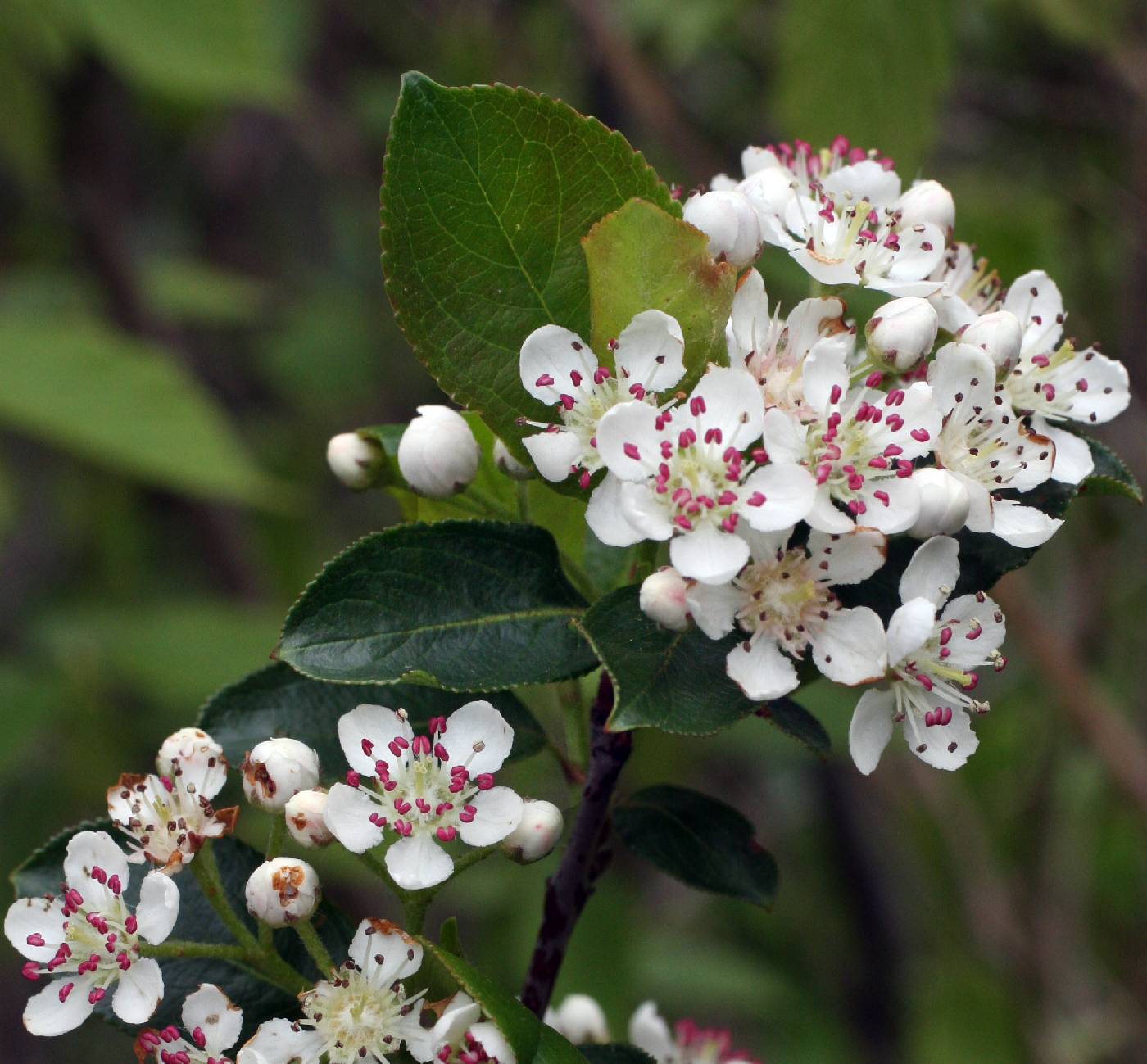
|
Family: Rosaceae |
Hypanthium broadly obconic; sep 5, spreading at anthesis, usually glandular on the margin; pet 5, broadly obovate or rotund, short- clawed, spreading; stamens usually 20; ovary densely woolly on the summit; styles 5, connate at base, long-persistent; fr a small, red to black pome; shrubs with simple, alternate, glandular- serrate lvs bearing a row of slender glands along the midvein on the upper side, and with rounded or flattened compound clusters of small white fls. Often submerged (along with Sorbus) in the closely allied genus Pyrus. Only our 2 spp.
In addition to the two following diploid, sexual spp., there is a series of ±self-perpetuating hybrids and hybrid-descendants, partly apomictic, possibly in part tetraploid, with dark purple or purple-black frs and with the herbage usually less pubescent than in A. arbutifolia, often ±glabrate; the lvs do not turn red. Such plants may occur with or without one or both of the parental species. This variable, partly stabilized population, which appears to be augmented by continuing hybridization, may be called A. prunifolia (Marshall) Rehder. (A. atropurpurea; Pyrus floribunda) Gleason, Henry A. & Cronquist, Arthur J. 1991. Manual of vascular plants of northeastern United States and adjacent Canada. lxxv + 910 pp. ©The New York Botanical Garden. All rights reserved. Used by permission. |
This project was made possible in part by the Institute of Museum and Library Services [MG-70-19-0057-19].
Powered by Symbiota



